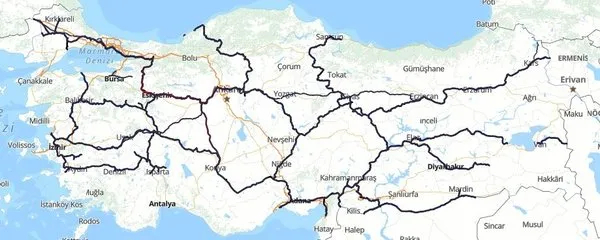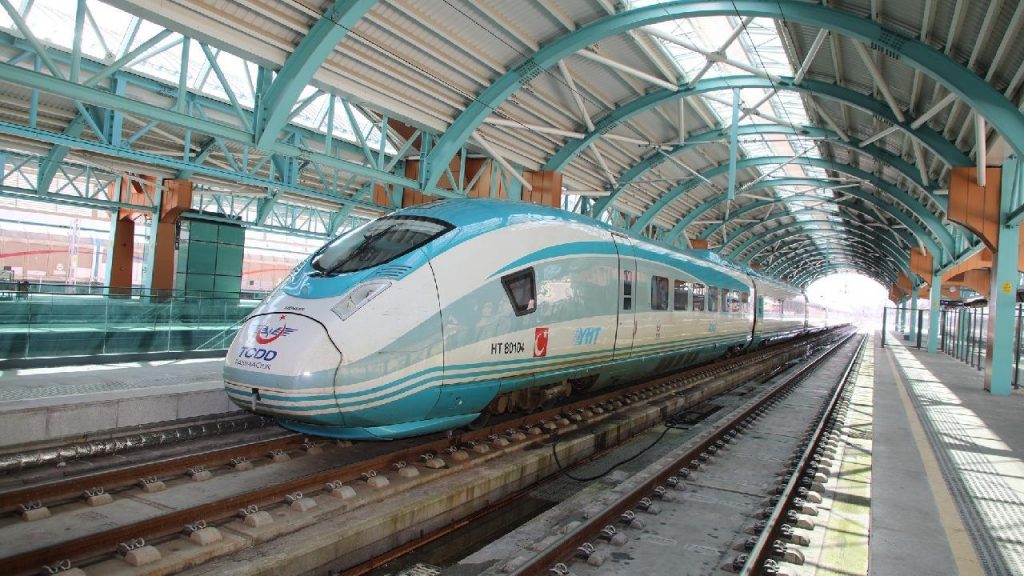High-Speed Rail Projects: Connecting Turkey’s Regions for Economic Growth
Turkey’s ambitious investment in high-speed rail infrastructure is reshaping the nation’s connectivity, bringing significant economic benefits across regions. With extensive projects linking major cities and economically strategic areas, Turkey is positioning itself as a leader in rail technology and logistics. This article explores the impact of these projects on Turkey’s economic development, regional integration, and transportation efficiency.
The Vision Behind Turkey’s High-Speed Rail Expansion
1. Strategic Infrastructure Development
Turkey’s high-speed rail initiatives stem from a broader strategy to modernize infrastructure and enhance nationwide connectivity. With its strategic location between Europe and Asia, Turkey sees high-speed rail as a critical tool for both domestic mobility and as a bridge for international trade routes.
2. Supporting Economic Growth through Connectivity
One of the main goals of Turkey’s high-speed rail investment is to stimulate economic growth by connecting industrial centers, business hubs, and key commercial zones. Improved rail connectivity reduces travel time, promotes regional trade, and makes it easier for goods and services to move across the country.

Key High-Speed Rail Projects in Turkey
Ankara-Istanbul High-Speed Line
The Ankara-Istanbul route, one of Turkey’s flagship high-speed rail lines, connects the capital with the nation’s largest city. Covering a distance of 533 kilometers, this line significantly reduces travel time between the two economic powerhouses, promoting business and tourism while easing road congestion.
Ankara-Konya Line
The Ankara-Konya high-speed line was the second major project completed in Turkey’s rail expansion. Linking two historically rich cities, this line supports tourism and economic interaction, encouraging trade and regional economic integration.
Ankara-Izmir Project
Currently under construction, the Ankara-Izmir line is set to become one of Turkey’s longest high-speed routes. Once operational, it will further connect western Turkey’s industrial centers with the central regions, enhancing opportunities for economic growth and job creation.
Economic Impacts of High-Speed Rail Connectivity
1. Boosting Local Economies and Employment
High-speed rail projects generate job opportunities both during construction and after completion, particularly in less-developed regions. By linking these areas to larger economic centers, the rail network encourages the growth of local businesses and tourism, improving the economic well-being of smaller towns and cities along the routes.
2. Enhancing Efficiency in Goods Transportation
High-speed rail doesn’t only improve passenger travel but also supports faster goods transportation. The improved logistics make it easier to transport goods across Turkey and into export markets, especially benefiting industries like agriculture, textiles, and automotive that rely on efficient logistics.
3. Real Estate Development Around Stations
The areas surrounding high-speed rail stations experience a surge in real estate development. Commercial, residential, and mixed-use projects emerge, transforming once rural or underdeveloped neighborhoods into vibrant communities. This transformation boosts property values and creates new business opportunities.

Social and Environmental Benefits
Reducing Road Congestion and Carbon Emissions
As more people opt for high-speed rail over car travel, road congestion decreases, especially on busy intercity routes. Reduced traffic leads to lower carbon emissions, supporting Turkey’s environmental goals and contributing to a more sustainable transport system.
Improving Quality of Life
By reducing travel times, high-speed rail enhances the quality of life for Turkish citizens, enabling them to commute more efficiently. It promotes work-life balance, making it possible for people to live in one city and work in another without long commutes, further integrating Turkey’s regions.
Challenges and Considerations in High-Speed Rail Expansion
High Construction and Maintenance Costs
While high-speed rail promises substantial benefits, it also requires significant investment in construction, maintenance, and operations. For Turkey, balancing the cost of these projects with expected economic gains is a challenge that requires careful planning and sustainable funding models.
Geographical and Technical Constraints
Turkey’s varied terrain presents technical challenges for high-speed rail construction, especially in mountainous or remote areas. These geographical limitations can increase project timelines and costs, necessitating advanced engineering solutions and infrastructure planning.

Future Outlook for Turkey’s High-Speed Rail Network
Turkey’s high-speed rail projects mark a transformative period in the country’s transportation infrastructure. With ongoing projects like the Ankara-Izmir line and plans for further expansion, Turkey aims to create a fully integrated rail network that strengthens economic ties across regions and boosts its position as a trade and logistics hub. By embracing high-speed rail, Turkey is investing not only in faster transport but also in a future of interconnected economic growth and regional development.













